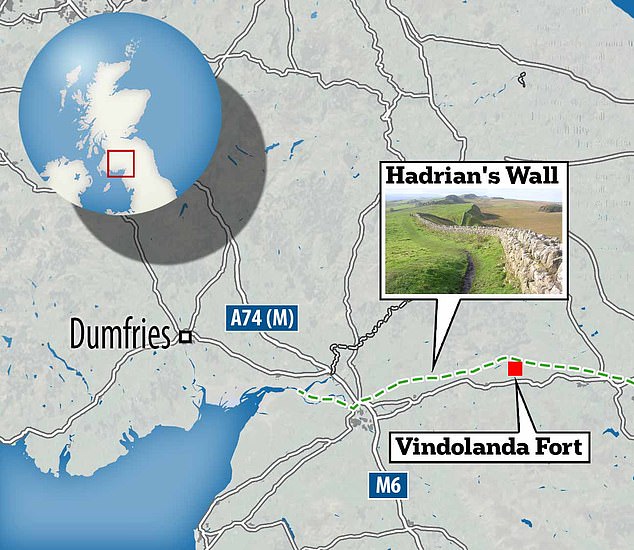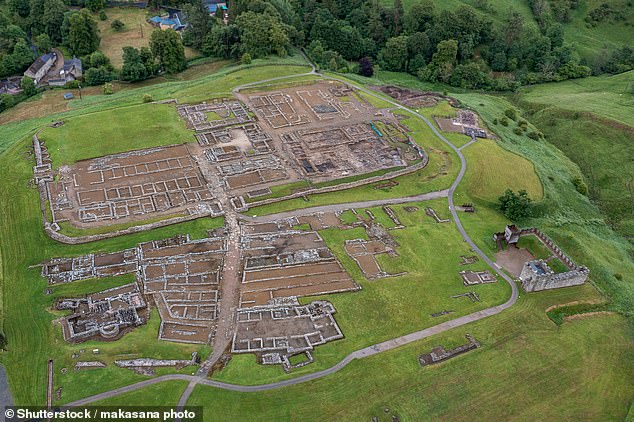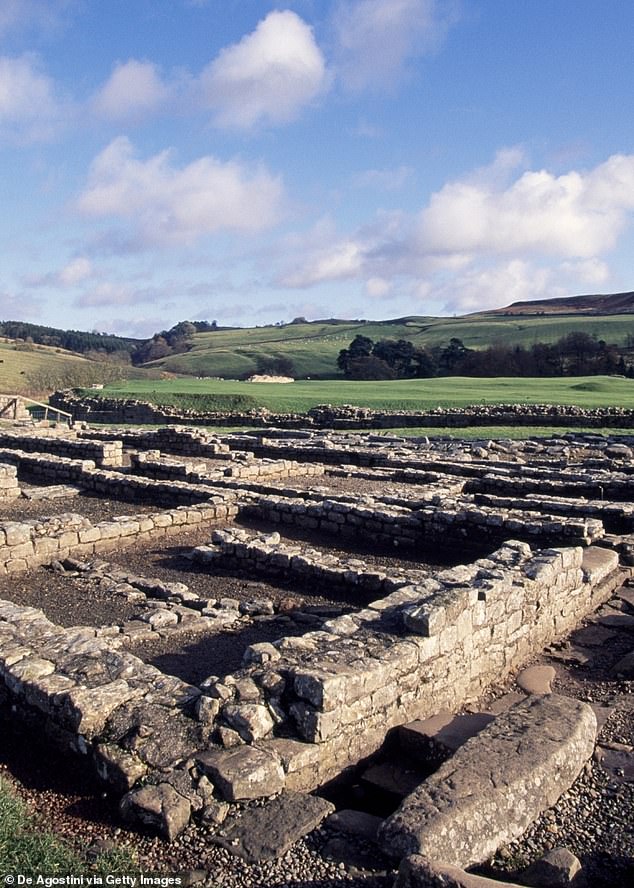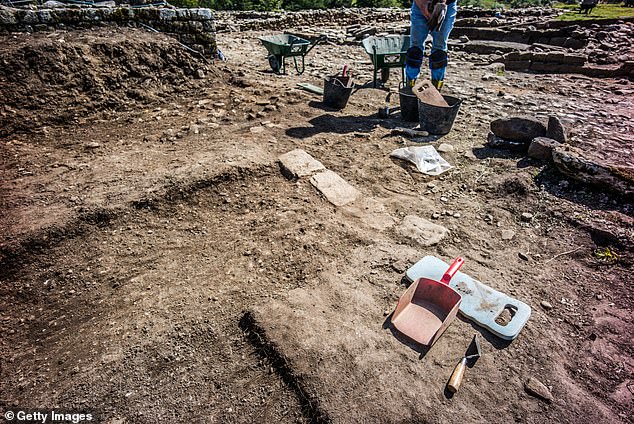Bed bugs came to Britain with the Romans: scientists discover blood-sucking parasites in 2,000-year-old soil samples near Hadrian’s Wall
The Romans may be better known for bringing baths and sewers to Britain, but new discoveries show that their contributions were not all so hygienic.
Archaeologists excavating the remains of Vindolanda, a Roman garrison site just south of Hadrian’s Wall, discovered that the Romans brought bedbugs to Britain.
Katie Wyse Jackson, a student from University College Dublin, discovered the remains of the blood-sucking pest while sifting through 2,000-year-old soil samples.
The researchers believe Roman soldiers brought the insects to Britain in their straw sleeping mats.
Mrs. Wyse Jackson says: ‘The Romans brought with them large quantities of clothing, straw and grain when they were setting up their camps. So it’s the perfect opportunity for one or two bedbugs to hitch a ride there.”
Archaeologists have discovered the oldest bedbug remains ever found in Britain at a Roman garrison called Vindolanda in Northumberland.

Vindolanda was a Roman fortress built just south of Hadrian’s Wall, at the very edge of the Roman Empire. The archaeologists found the bed bug remains in soil samples dating back to 100 AD
While it may have felt like bed bugs are everywhere after last year’s panic, these insects were far less common in the Roman world.
Dr. Andrew Birley, head of the Vindolanda archaeological team, told MailOnline: ‘The Vindolanda bedbugs are the earliest discovery from Roman Britain.’
Roman bedbugs have been found once before in Britain, at Alcester in Warwickshire, but these are from an even earlier date.
The soil samples in which Mrs. Wyse Jackson discovered the insect remains came from one of the deepest layers of the fort, dating back to 100 AD.
In the moist soils near Hadrian’s Wall, organic material is preserved for an extremely long time.
Using a method called paraffin floatation, she was able to collect two preserved thoraxes believed to be from the common bed bug or, in their Latin name, Cimex lectularius.

Vindolanda Fort (pictured) was an important site for the Roman Empire in Britain. South of Hadrian’s Wall it played a crucial role in defending the empire and supporting the other fortresses in the surrounding region

The discovery of bedbugs in Vindolanda (photo) tells us a lot about how people lived there
Dr. Birley says this discovery highlights the challenges of the soldiers’ lives here.
He said: ‘They have had to put up with an awful lot, which we might be much more likely to complain about today.’
The study of ancient insects, or archaeoentomology, can provide valuable insight into the lives and conditions of the past.
“Finding things like this helps humanize the people of the past,” Mrs. Wyse Jackson said The guard.
The researchers also discovered the remains of the grain beetle, which can be found in modern kitchen products such as flour, and the sawtooth grain beetle.
Because beetles have a specific diet and habitat, identifying species that were present in the past can tell us what conditions were like for the people who lived there.

Many of the insect remains found at the site (pictured) lived in close proximity to humans and fed on waste food and dung. This suggests that the Roman camp may not have been as clean as previously thought
Mrs Wyse Jackson said: ‘I can learn about trade, food storage, hygiene and waste management from what species are present and in what numbers.
‘I am currently finding a large number of grain and dung beetles.’
She also notes that a large number of the beetles found are “synanthropic,” meaning they live in close proximity to humans.
She adds: ‘So we’re really not dealing with a clean space here.
‘The Romans do have a reputation for being extremely clean and so it’s interesting to find all these insects that contradict that.’
But just like today, bed bugs cannot travel long distances on their own.
In most cases, bed bugs can travel about 100 feet per night, which can be enough to infest an entire house, but not enough to travel across countries.
Dr. Birley told MailOnline that the bedbugs were most likely transported to the site when the Roman soldier set up camp.
As an important garrison on the northernmost frontier of the Roman Empire, the Vindolanda Garrison brought mustered troops and equipment from across the ancient world.
There is evidence that the fort imported supplies such as wine, fish sauce, olive oil and even pepper.
Just as a bed bug is carried on an airplane today, it is likely that these ancient insects hitched a ride in the luggage imported by Roman legionaries.
He says: ‘The current theory is that the bedbugs would have been transported on the packaged clothing and bedding/necessities.
‘They (the Romans) also import carpets and wall coverings and can get a lift on that.’
